Charlotte's Web SummaryPrefaceCharlotte's Web is a book of kids' writing by American writer E. B. White and delineated by Garth Williams; Harper & Brothers published it on October 15, 1952. The clever recounts the narrative of a domesticated animal pig named Wilbur and his fellowship with a stable bug named Charlotte. To persuade the farmer to allow Wilbur to live, Charlotte writes messages of praise for him in her web, such as "Some Pig" and "Humble," when Wilbur is in danger of being killed by the farmer. Charlotte's Web, a piece of children's literature regarded as a classic and beloved by readers of all ages, was written in White's dry, understated style. The description of the sensation of swinging on a rope swing at the farm is an often quoted illustration of rhythm in writing since the speed of the words corresponds to the swing's motion. Publishers Weekly ranked The book as the all-time best-selling children's paperback in 2000. 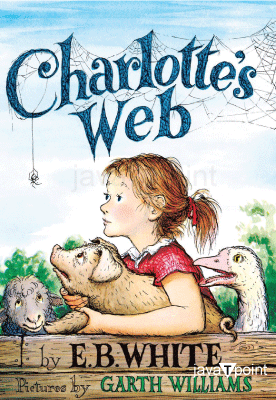
Charlotte's Web, a piece of children's literature regarded as a classic and beloved by readers of all ages, was written in White's dry, understated style. The description of the sensation of swinging on a rope swing at the farm is an often quoted illustration of rhythm in writing since the speed of the words corresponds to the swing's motion. Publishers Weekly ranked The book as the all-time best-selling children's paperback in 2000. In 1973, Sagittarius Productions and Hanna-Barbera Productions turned Charlotte's Web into an animated film. In 2003, Paramount released Charlotte's Web 2: Wilbur's Great Adventure, the direct-to-video follow-up, in the United States (Universal handled the movie's overseas distribution). The original narrative by E. B. White was made into a live-action movie in 2006. In addition, a video game inspired by this adaptation emerged in 2006. Introduction to the AuthorElwyn Brooks White was an American essayist, author, and literary stylist born in Mount Vernon, New York, on July 11, 1899, and died in North Brooklin, Maine, on October 1, 1985. His expressive, unaffected style captured the attention of readers of all ages. 
Before beginning work as a writer and contributing editor for The New Yorker magazine in 1927, White, who received his degree from Cornell University in Ithaca, New York, in 1921, worked as a reporter and freelance writer. In 1929, he tied the knot with Katherine Sergeant Angell, who served as The New Yorker's first fiction editor and spent the remainder of his working life there. Together with his wife, White published A Subtreasury of American Humor in 1941. His three books for children, Charlotte's Web (1952, films in 1973 and 2006), The Trumpet of the Swan (1970), and Stuart Little (1945, film in 1999), are all regarded as classics because of their endearing animal characters that interact with people in a natural way. White received a special Pulitzer Prize in 1978 for "his letters, essays, and the full body of his work." In 1963, he was also granted the Presidential Medal of Freedom and honorary memberships in other literary organizations around the country. Based on White's short tale of the same name, The Family That Dwelt Apart, a 1973 Canadian animated short film that received an Oscar nomination, has narration by White. ThemeDeathThe main topic of Charlotte's Web is death, which Charlotte, the spider, brings up. Norton D. Kinghorn asserts that Charlotte's web is a wall dividing two realms. These are the life and death spheres. According to scholar Amy Ratelle, by having Charlotte continuously kill and consume flies throughout the book, White normalizes death for both Wilbur and the readers. Templeton, the rat, only perceives death as an event that will occur in the far future, but Wilbur perceives it as the end of the world. Neither Wilbur nor Templeton regards death as an element of their life. 
When Wilbur is worried about being killed at night, he continuously thinks about dying. Wilbur can avoid death, but Charlotte, the spider that looks after Wilbur, is unable to avert death as well. Trudelle H. Thomas writes that even in the presence of death, life goes on, and ultimately, virtue triumphs when Charlotte dies away. Readers can take away from the book that while death can be postponed, no one can ever truly escape it. Metamorphosis (Change/Transformation)Charlotte's web also serves as a metaphor for transformation, according to Norton D. Kinghorn. Kinghorn refers to a transformation that affects the farm/barn environment and the human world. It is impossible to avoid change in either of these realms. The novel's protagonists experience their transformations as well as seasonal changes. Additionally, Anne Deveraux clarifies that during the book, Wilbur and Fern experience their transformations as they approach maturity. Wilbur's acceptance of death and Fern's renunciation of her doll collection exemplify this. Sue Misheff, a scholar, explains that as Wilbur matures throughout the book, he can take on the role of Charlotte's children's caregiver just as she did for him. Sophie Mills claims that the characters push the boundaries of change rather than submit to the ones imposed upon them. Wilbur experiences a shift as he moves to a new area differently. According to Amy Ratelle, Wilbur transforms from a beloved pet to a farm animal when he transfers from Fern's home to Homer Zuckerman's farm. InnocenceIn the book, Fern, a young girl, transitions from a kid to a more mature adult. Kinghorn observes that this transformation might also be seen as a loss of innocence. At the outset of the book, Wilbur likewise appears youthful and innocent. There is a parallel made between Wilbur and Fern's youth and innocenc. 
According to Sophie Mills, the two characters may relate to one another. At first, the idea that life must end horrifies both Wilbur and Fern, but by the book's conclusion, both characters have come to terms with the idea that everything inevitably dies. Matthew Scully claims that the book illustrates how adults and children have different perspectives on the world. Characters
SummaryAn eight-year-old girl named Fern Arable and her parents and elder brother Avery resides on a farm. When her father attempts to slaughter a runt pig one day, Fern intervenes, arguing that it is wrong to murder the animal just because it is tiny and defenseless. Fern gives the pig the name Wilbur. Fern plays with Wilbur and feeds him from a baby bottle for several weeks when they grow close. 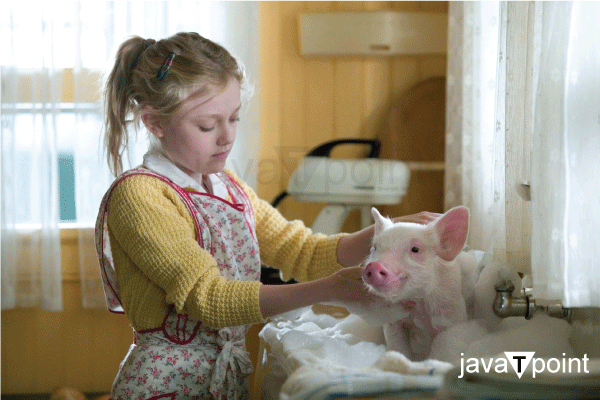
Wilbur's father, Mr. Arable, demands that he be sold at five weeks old. Fern talks to her farm-owning uncle and aunt, the Zuckermans. Wilbur costs them $6, so they purchase him. Fern frequently visits Wilbur in the Zuckerman barn, but when she's not there, Wilbur becomes lonely and longs for a buddy. One day, a faint voice promises that it will be his friend. A spider named Charlotte, who resides on a web above Wilbur's pen, is the source of the voice. Despite his joy at making a new companion, Wilbur is troubled by her violent feeding practices. A goose in the barn hears them talking, and she wonders if maybe Wilbur doesn't know the Zuckermans would kill him at Christmas. 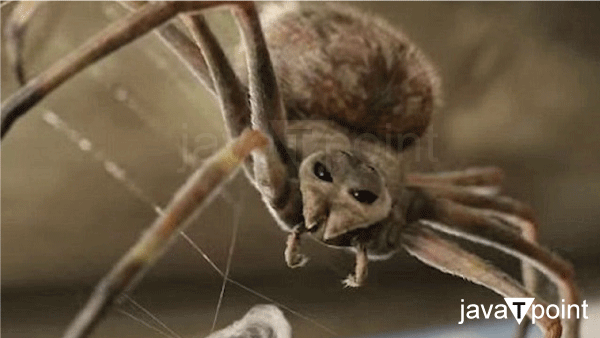
The animals trust Fern when she visits Wilbur frequently over the summer. Wilbur is getting enough food and expanding in size. But one day, the eldest sheep comes to Wilbur and warns him that the Zuckermans will slaughter him and use his meat to create ham and bacon. When Wilbur starts to feel scared, he reaches out for help. Charlotte vows to develop a strategy. In the meantime, Fern informs her parents about how she has heard the animals in the Zuckermans' barn conversing, much to her mother's distress. After considering her options for several days, Charlotte deceives Mr. Zuckerman to save Wilbur. One evening, she breaks a thread in her web and starts spinning. Lurvy, the farmhand who works for the Zuckermans, observes Charlotte's web above the pig the following morning as he carries Wilbur's slop to his trough. In the center are the words SOME PIG! written out in full. The Zuckerman family and Lurvy are both shocked. Mr. Zuckerman claims to the local minister that the web is a miracle. As word spreads, residents of the entire county travel to see Wilbur. To add additional words to her web, Charlotte begs the barnyard animals for their assistance. The goose says terrific. The eldest sheep gets Templeton, the rat who lives under Wilbur's trough, to rip off newspaper advertising from the garbage and bring those to Charlotte so she may use them as additional phrases. That evening, Charlotte weaves a web with the word TERRIFIC in the center. The "terrific" pig attracts visitors, who quickly frequent the Zuckerman farm. In September, Mr. Zuckerman decides to take Wilbur to the county fair. 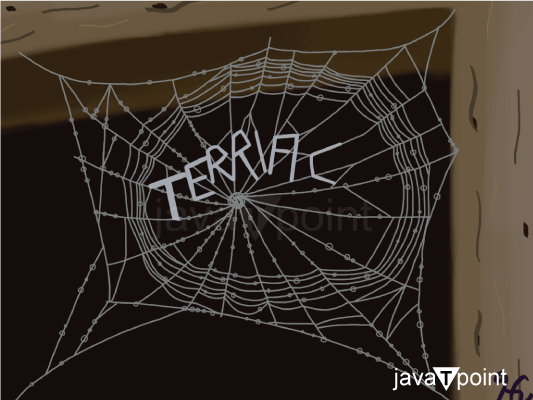
Charlotte decides to weave RADIANT into her web after Templeton presents her with a soap advertisement that reads, "With New Radiant Action." The following day, Fern shares with her mother some of the tales Charlotte told Wilbur, including one involving a relative who spun a balloon and flew out into the wind. Dr. Dorian tells Mrs. Arable that her daughter's conduct will eventually lead her to develop an interest in Henry Fussy, a guy she knows, just as much as she does in the animals. This is in response to her driving into town to ask for his guidance. As the end of the summer draws near, Charlotte writes RADIANT in her web, and Wilbur continues to draw large audiences. Lurvy, the Zuckermans, and the Arables prepare for the fair. To accompany Wilbur to the fair, Charlotte and Templeton conceal themselves within the container Lurvy made for him. As soon as she arrives, Charlotte begins to weave a web over Wilbur's enclosure and observes a giant hog named Uncle beside it. Shortly after Fern and Avery go to have fun, Henry Fussy gives Fern a ride on a roller coaster. Templeton visits the fair with Charlotte and returns with a newspaper clipping that Charlotte may use to decorate her web with the word "humble." The family and Lurvy travel home by car after spending a scorching day at the fair. Even though Charlotte is exhausted, she assures Wilbur that she is creating a masterpiece she will display to him the next day. Wilbur discovers Charlotte has created an egg sac containing 514 eggs the following morning. In her statement to Wilbur, Charlotte doubts she will see her children grow up. Templeton informs Wilbur & Charlotte that their uncle got the first place because of the blue sticker on his pen. As they enter the fair, the Arables, Zuckerman, and Lurvy are delighted to see the word HUMBLE in Charlotte's web, but they soon discover that Uncle has already won. Wilbur continues receiving a buttermilk bath from Mr. Zuckerman to look his best. The loudspeaker suddenly crackles with a voice calling Mr. Zuckerman to bring his pig to the judges' booth and announcing that a special prize would be granted. Fern sees Henry while driving there, so she dashes off to buy him a trip on the Ferris wheel. A bronze medal and $25 are given to Mr. Zuckerman. In the excitement, Wilbur passes out. Nevertheless, Templeton bites his tail to keep him alive. Charlotte informs Wilbur that she won't return to the farm since she will shortly pass away. Wilbur assures Templeton that if he finds Charlotte's egg sac, Wilbur will always let him eat first from his trough. Templeton concurs. The egg sac is being held in Wilbur's mouth. Wilbur winks at Charlotte as she gestures and says goodbye before being shoved into his kennel. Charlotte passes away the next day. Wilbur brings the egg sac home. He protects and heats it throughout the winter, and little spiders start to creep out in the spring. Each baby spider constructs a balloon of fine silk one morning and flies out in a pleasant breeze. When Wilbur wakes up, three small voices welcome him after he has cried himself to sleep. Three of Charlotte's daughters have chosen to remain so that they may hang out with Wilbur. Spiders give birth each spring. Most of them take off, but some always stay. Although Wilbur has a happy, long life, Charlotte will always be in his memory. ConclusionOne of the finest children's novels of all time, Charlotte's Web by E.B. White has been a treasured classic for over 60 years. The ageless ideas and enduring characters in this classic tale of friendship, loyalty, and bravery have moved and inspired generations of readers. Charlotte's Web is really about the connection between people and animals and how the power of that connection can transcend any challenge. It conveys a positive message of optimism and appeals to the strength of friendship and love. White managed to write a warm and joyful novel while writing it during a time when there was a lot of uncertainty around the globe. White's skilful use of language is another aspect of the book that elevates it beyond other works of fiction, including those for young readers. 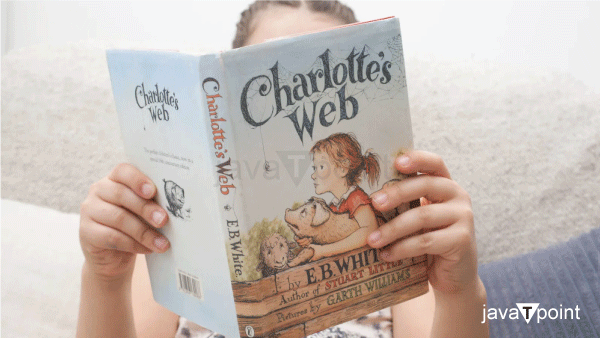
As it embodies the core of being human, Charlotte's Web continues to be one of the most cherished children's stories. Its enduring history is proof of the potency of narrative and the permanent impression it can make on our minds and hearts.
Next TopicCry the Peacock Summary
|
 For Videos Join Our Youtube Channel: Join Now
For Videos Join Our Youtube Channel: Join Now
Feedback
- Send your Feedback to [email protected]
Help Others, Please Share









